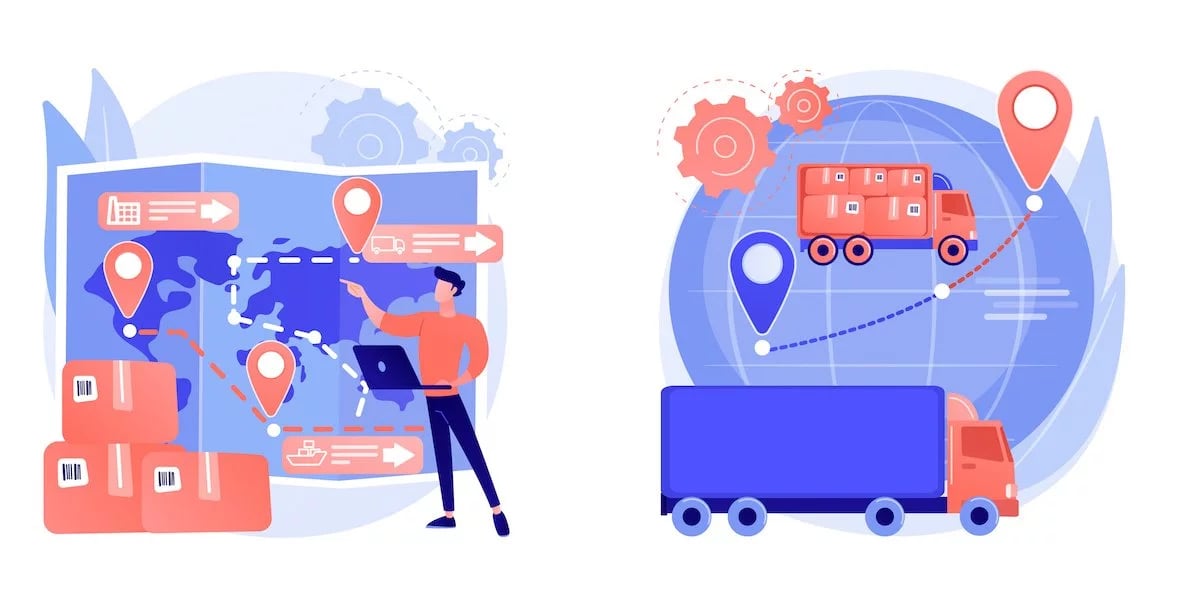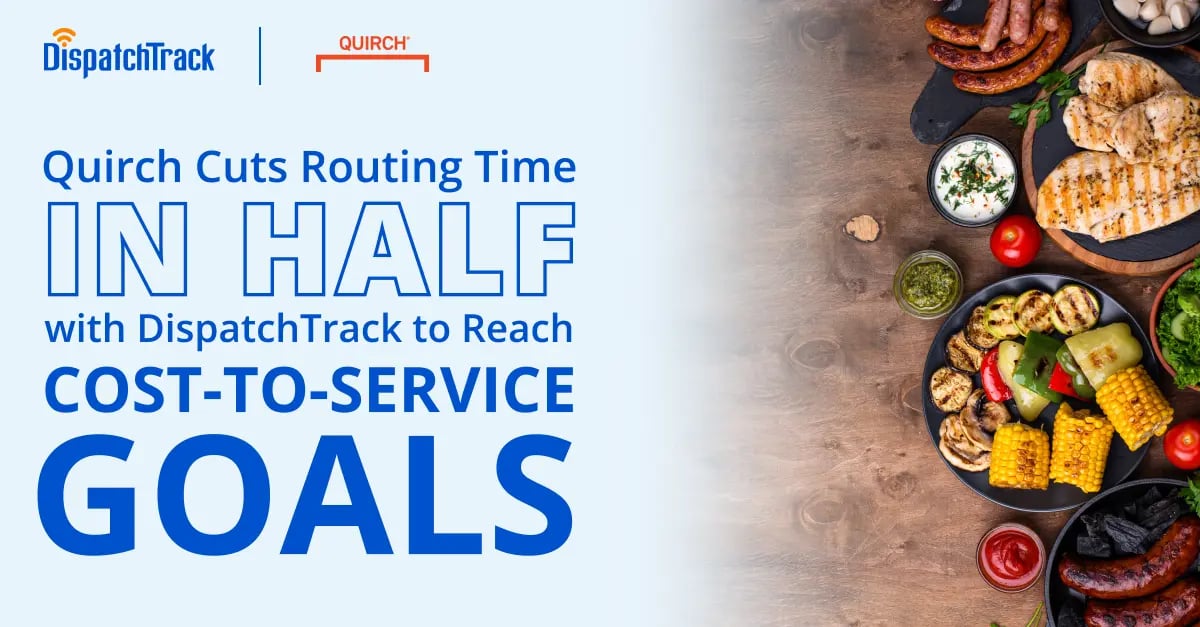Food distribution, beer wholesaling, field service scheduling, and other businesses that live and die by regular, recurring orders face a lot of day-to-day challenges around routing and delivery management. But one of the most common challenges we encounter when working with these businesses is that their sales territories are a mess.
 The initial planning phase in which the territories are sketched out might last weeks or months—which means that the process isn’t going to be repeated on a regular basis, even as business conditions change. So slowly, over time, these sales territories become less and less efficient as planners basically have to eyeball them to make adjustments for new accounts, changing market conditions, and changes to your delivery network. As they become less efficient, delivery runs and sales calls become less cost-effective.
The initial planning phase in which the territories are sketched out might last weeks or months—which means that the process isn’t going to be repeated on a regular basis, even as business conditions change. So slowly, over time, these sales territories become less and less efficient as planners basically have to eyeball them to make adjustments for new accounts, changing market conditions, and changes to your delivery network. As they become less efficient, delivery runs and sales calls become less cost-effective.
One of the reasons that territory planning is prone to this kind of challenge is that the actual planning process is too slow and complex—at least when you’re using legacy technology. We’ve gone over that in blog posts in the past, so today we’ll focus on a less obvious challenge: disconnect between territory planning and routing.
Challenges in Territory Planning
Territory planning is a complex process. You need to account for a host of different factors—from site-specific customer requirements to time window preferences to driver/sales rep affinity to revenue balance between sellers—all of which exponentially increase the number of possible territory configurations.
Once you’ve divided accounts into territories, you’re not even close to finished—because these territories need to actually work when they’re translated into weekly and daily routes. For a lot of planners, this is where the process gets really frustrating.
Your territory planning solution spits out a set of sales territories, which you then have to manually move into your routing solution to create routes for your drivers/sellers. When those routes aren’t feasible or there’s no way to make sure you’re actually visiting every client at the right time, you have to go back to your territory planning solution and try to finagle the territories to resolve whatever issue you’re running. Then you have to repeat step 2 and hope that this time the territory planning solution has actually created something you can use. If it hasn’t, you have to keep repeating this cycle over and over again until you have a plan that actually works.
Territory planning and route optimization are difficult enough on their own. When you have to navigate this chasm of finicky manual effort between processes, the challenge only multiplies. The result is incredible frustration for the planners who have to navigate these systems, the sellers who have to work with these inefficient plans, and the customers who wonder why their distributors, wholesaler, linen delivery provider, etc. can’t accommodate new requests.

Why Faster Routing and Territory Planning Is So Important
The problem we described above might seem intractable. But some of the struggle vanishes when you’re able to run territory plans and optimize routes within a matter of minutes, rather than hours or days.
Why does this make a big difference? There are a couple of reasons:
- Faster territory planning means that you can run optimizations more frequently. Rather than spending months “just trying to make it work,” you can run a new optimization whenever something significant has changed in your business.
- Likewise, when your routes can be optimized and re-optimized within a few seconds, you have a lot more flexibility day-to-day and week-to-week. When you know that routes can easily be adjusted when changes crop up, you have a lot more leeway in your overall planning process.
It’s easy enough to imagine the ways in which this might take some of the pain out of the process. At the same time, your planners are still stuck as the manual intermediary between two processes that are effectively siloed.
That’s why the real solution is to plan routes and territories simultaneously within the same solution.
How to Plan Routes and Territories at the Same Time
By planning routes and territories within the same solution, you can solve the problems we’ve been sketching out over the course of this article. Rather than laboriously exporting and important territory plans and route plans, you can generate them within the same system to create streamlined, intelligent, user-friendly workflows.
How does this work in practice? You might expect a process like this one:
- You upload your delivery and sales data—including metadata around customer time window constraints, site-specific requirements, order volumes and mixes, frequencies, vehicle and equipment information, etc.—into the combined system that handles territory planning and route optimization.
- You upload your existing sales territories so that the system can automatically map them out and analyze them.
- You run an initial optimization pass on your existing territories to weed out inefficiencies and create tighter, more balanced territories—if you’re working with powerful enough software, this will only take a few minutes.
- While the software is running through potential territory configurations, it simultaneously generates routes based on the territories it’s evaluating. These routes will be based on the data you’ve provided and the parameters you’ve inputted.
- By generating routes throughout the territory optimization process, the system is able to ensure that it’s only presenting the user with territories that will actually work when they’re translated into daily and weekly route plans.
- After a few minutes, the system presents a first pass at a set of territories. If you’re using the right technology, these will be more efficient than what you were previously utilizing. The system should then be able to show the delta between the old plan and proposed new plan.
- Of course, there’s no complete substitute for the knowledge and expertise that planners have when it comes to their sales and delivery processes. So once the system has created these territories, users should be able to easily adjust them without jeopardizing efficiency. This means that as the user updates the plan, the system adjusts accordingly.
- From there, because the two processes share the same system, there’s no extra step required to import the plans into the routing console. It happens automatically, and when it comes time to develop weekly and daily route plans that include all the stops a given seller/driver needs to hit, you simply click over the routing tab.
- As you take on new clients or change your product or service offerings, simply rinse and repeat. When the process only takes a matter of minutes, you can update plans and routes as often as needed—and at no point do you need to switch between applications or jerryrig unworkable plans.
Sure, that process may have a fair number of steps as we’ve broken it out here—but that’s really just to illustrate the ways that routing and territory planning naturally intersect. When you can combine them into a single system, many of these steps fade into the background. And when you combine them in a single system that’s fast, powerful, and intelligent, you make life a lot better for planners, drivers, and customers. Best of all, you make it easier to ensure great customer service and efficient cost-to-serve—even as business conditions evolve.